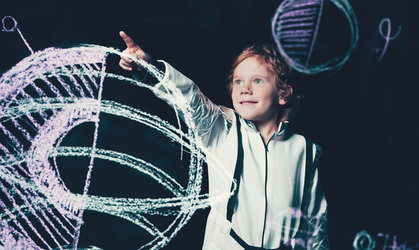Accept all cookies Accept only essential cookies See our Cookie Notice

About ESA
The European Space Agency (ESA) is Europe’s gateway to space. Its mission is to shape the development of Europe’s space capability and ensure that investment in space continues to deliver benefits to the citizens of Europe and the world.
Highlights
ESA - United space in Europe
This is ESA ESA facts Member States & Cooperating States Funding Director General Top management For Member State Delegations European vision European Space Policy ESA & EU Responsibility & Sustainability Annual Report Calendar of meetings Corporate newsEstablishments & sites
ESA Headquarters ESA ESTEC ESA ESOC ESA ESRIN ESA EAC ESA ESAC Europe's Spaceport ESA ESEC ESA ECSAT Brussels Office Washington OfficeWorking with ESA
Business with ESA ESA Commercialisation Gateway Law at ESA Careers Cyber resilience at ESA IT at ESA Newsroom Partnerships Merchandising Licence Education Open Space Innovation Platform Integrity and Reporting Administrative Tribunal Health and SafetyMore about ESA
History ESA Historical Archives Exhibitions Publications Art & Culture ESA Merchandise Kids Diversity ESA Brand Centre ESA ChampionsLatest
Space in Member States
Find out more about space activities in our 22 Member States, and understand how ESA works together with their national agencies, institutions and organisations.
Science & Exploration
Exploring our Solar System and unlocking the secrets of the Universe
Go to topicAstronauts
Missions
Juice Euclid Webb Solar Orbiter BepiColombo Gaia ExoMars Cheops Exoplanet missions More missionsActivities
International Space Station Orion service module Gateway Concordia Caves & Pangaea BenefitsLatest
Space Safety
Protecting life and infrastructure on Earth and in orbit
Go to topicAsteroids
Asteroids and Planetary Defence Asteroid danger explained Flyeye telescope: asteroid detection Hera mission: asteroid deflection Near-Earth Object Coordination CentreSpace junk
About space debris Space debris by the numbers Space Environment Report In space refuelling, refurbishing and removingSafety from space
Clean Space ecodesign Zero Debris Technologies Space for Earth Supporting Sustainable DevelopmentLatest
Applications
Using space to benefit citizens and meet future challenges on Earth
Go to topicObserving the Earth
Observing the Earth Future EO Copernicus Meteorology Space for our climate Satellite missionsCommercialisation
ESA Commercialisation Gateway Open Space Innovation Platform Business Incubation ESA Space SolutionsLatest
Enabling & Support
Making space accessible and developing the technologies for the future
Go to topicBuilding missions
Space Engineering and Technology Test centre Laboratories Concurrent Design Facility Preparing for the future Shaping the Future Discovery and Preparation Advanced Concepts TeamSpace transportation
Space Transportation Ariane Vega Space Rider Future space transportation Boost! Europe's Spaceport Launches from Europe's Spaceport from 2012Latest

Comet Hale-Bopp hydrogen cloud seen by SOHO
Thank you for liking
You have already liked this page, you can only like it once!
A huge cloud of hydrogen surrounded Comet Hale-Bopp when it neared the Sun in the spring of 1997. Ultraviolet light, charted by the SWAN instrument of the SOHO spacecraft, revealed a cloud 100 million kilometres wide and diminishing in intensity outwards (contour lines). It far exceeded the great comet's visible tail (inset photograph). Although generated by a comet nucleus perhaps 40 km in diameter, the hydrogen cloud was 70 times wider than the Sun itself (yellow circle to scale) and 10 times wider than the hydrogen cloud of Comet Hyakutake observed by SWAN in 1996. Solar rays broke up water vapour released from the comet by the warmth of the Sun. The resulting hydrogen atoms shone by ultraviolet light invisible from the Earth's surface. Even a satellite's view of the Hale-Bopp cloud would be spoiled by hydrogen around the Earth. Stationed 1.5 million kilometres out in space, SOHO had a clear view. SWAN is the brainchild of Jean-Loup Bertaux and colleagues at the Service d'Aéronomie du CNRS (France) and the Finnish Meteorological Institute. Tuned to see hydrogen, SWAN scans the sky and studies the solar wind's effect on hydrogen atoms coming from interstellar space. Comets reveal themselves as local sources of hydrogen. With SWAN's maps, Michael Combi of the University of Michigan studies gas outflow from comets. He also uses the Hubble Space Telescope, but that instrument cannot safely look at comets near the Sun. The unique SWAN observations of Comet Hale-Bopp imply that the outflow of water vapour peaked at almost 50 million tonnes a day. [Image Date: 01-04-97] [97.07.010-002]
-
CREDIT
ESA -
LICENCE
ESA Standard Licence

Soho images Comet Hale-Bopp approaching the Sun

ISO views Comet Hale-Bopp

Hubble images of Comet Hale-Bopp

Structure of a comet















 Germany
Germany
 Austria
Austria
 Belgium
Belgium
 Denmark
Denmark
 Spain
Spain
 Estonia
Estonia
 Finland
Finland
 France
France
 Greece
Greece
 Hungary
Hungary
 Ireland
Ireland
 Italy
Italy
 Luxembourg
Luxembourg
 Norway
Norway
 The Netherlands
The Netherlands
 Poland
Poland
 Portugal
Portugal
 Czechia
Czechia
 Romania
Romania
 United Kingdom
United Kingdom
 Sweden
Sweden
 Switzerland
Switzerland

























